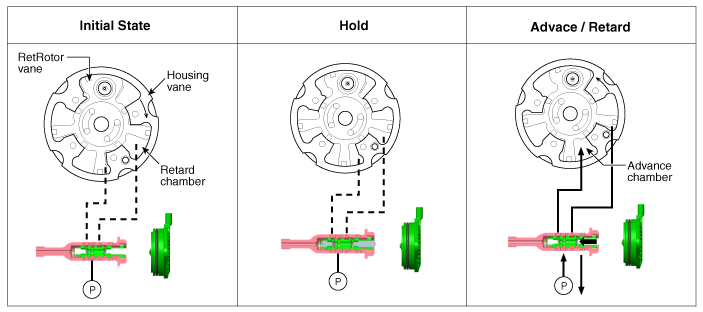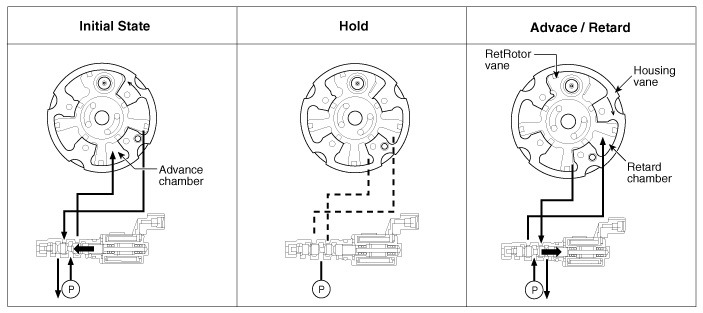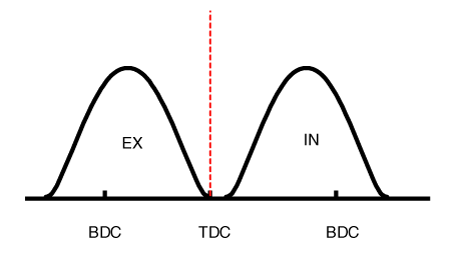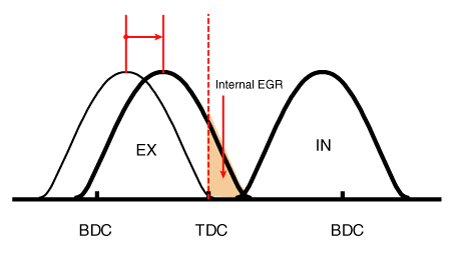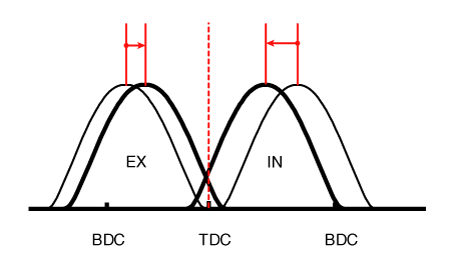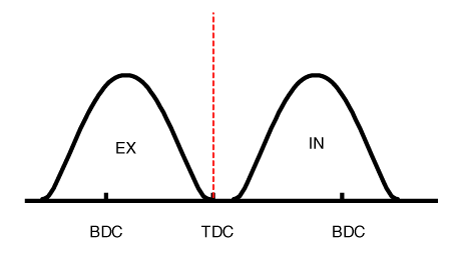Kia Niro: Cylinder Head Assembly / CVVT & Camshaft Description and operation
| Description |
Continuous Variable Valve Timing (CVVT) system advances or retards the valve timing of the intake and exhaust valve in accordance with the ECM control signal which is calculated by the engine speed and load.
By controlling CVVT, the valve over-lap or under-lap occurs, which makes better fuel economy, reduces exhaust gases (NOx, HC) and improves engine performance through reduction of pumping loss, internal EGR effect, improvement of combustion stability, improvement of volumetric efficiency, and increased expansion work.
This system consists of
| – |
the CVVT Oil Control Valve (OCV) which supplies the engine oil to the cam phaser or runs out the engine oil from the cam phaser in accordance with the ECM PWM (Pulse With Modulation) control signal, |
| – |
the CVVT Oil Temperature Sensor (OTS) which measures the engine oil temperature, |
| – |
and the Cam Phaser which varies the cam phase by using the hydraulic force of the engine oil. |
The engine oil released from the CVVT oil control valve varies the cam phase in the direction (Intake Advance/Exhaust Retard) or opposite direction (Intake Retard/Exhaust Advance) of the engine rotation by rotating the rotor connected with the camshaft inside the cam phaser.
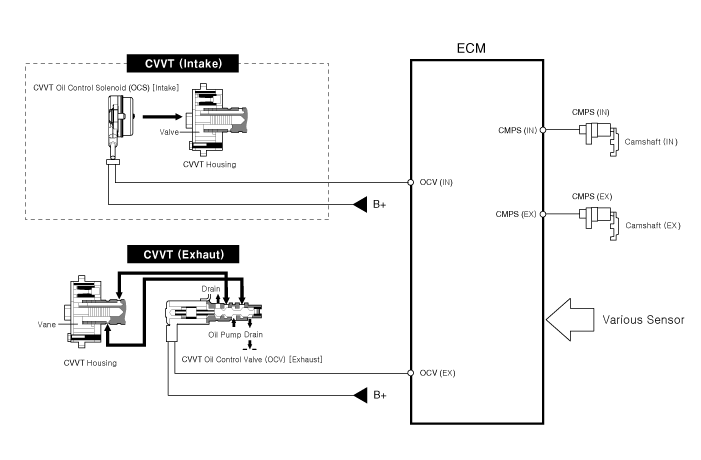
| Operation Principle |
The CVVT has the mechanism of rotating the rotor vane with hydraulic force generated by the engine oil supplied to the advance or retard chamber in accordance with the CVVT oil control valve control.
| 1. |
Intake CVVT
|
| 2. |
Exhaust CVVT
|
| [CVVT System Mode] |
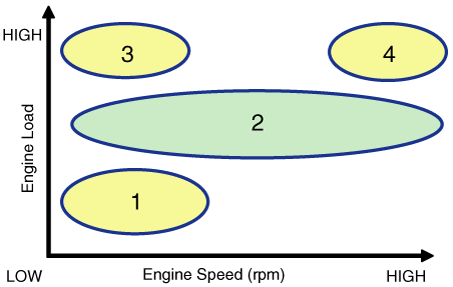
|
(1) Low Speed / Low Load |
(2) Partial Load |
|
|
|
|
(3) Low Speed / High Load |
(4) High Speed / High Load |
|
|
|
|
Driving Condition |
Exhaust Valve |
Intake Valve |
||
|
Valve Timing |
Effect |
Valve Timing |
Effect |
|
|
(1) Low Speed /Low Load |
Completely Advance |
* Valve Under-lap * Improvement of combustion stability |
Completely Retard |
* Valve Under-lap * Improvement of combustion stability |
|
(2) Part Load |
Retard |
* Increase of expansion work * Reduction of pumping loss * Reduction of HC |
Retard |
* Reduction of pumping loss |
|
(3) Low Speed /High Load |
Retard |
* Increase of expansion work |
Advance |
* Prevention of intake back flow (Improvement of volumetric efficiency)
|
|
(4) High Speed /High Load |
Advance |
* Reduction of pumping loss |
Retard |
* Improvement of volumetric efficiency |
 Cylinder Head Cover Repair procedures
Cylinder Head Cover Repair procedures
Removal
Engine removal is not required for this procedure.
•
Use fender covers to avoid da ...
 CVVT & Camshaft Repair procedures
CVVT & Camshaft Repair procedures
Removal
•
Use fender covers to avoid damaging painted surfaces.
...
Other information:
Kia Niro 2017 (DE HEV) Service Manual: Front Pillar Trim Components and components location
Component Location
1. Front pillar trim
...
Kia Niro 2017 (DE HEV) Service Manual: Windshield Wiper-Washer Switch Repair procedures
Removal
1.
Disconnect the negative (-) battery terminal.
2.
Remove the steering wheel.
(Refer to Steering System - "Steering Wheel")
3.
Remove the steering column upper and lower shrouds after loosening the ...

